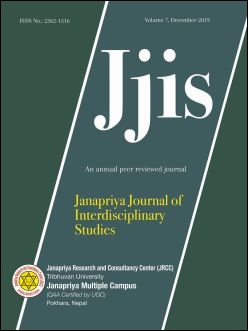Culture and Symbolism Nexus in Anthropology
DOI:
https://doi.org/10.3126/jjis.v7i1.23061Keywords:
Communication, paradigm, symbolic anthropology, thick descriptionAbstract
Study of symbols or the theory of symbolism makes micro study of the culture. Symbols are the gestures, objects and language, which form the basis of human communication. Interpretation of symbol may differ according to the culture. At the same time a symbol may have one meaning in one culture another meaning in another culture. Symbols represent signs which are used to signify objects, real or imaginary. Symbols are arbitrary based on convention of culture. Interpretation of symbol depends on culture. Symbols are means of Communication of language, a form of ritual expression, cultural interpretation, expression of art and belief. Symbols should not be looked at in an abstract way and at meaning as constructed apart from human action but rather at the way meaning is constructed and used in the context of this action. Symbolism studies how a culture functions on the basis of its meanings, how a symbol is interpreted and so on. Symbolism studies the interrelationship between culture, language and people. Culture is constructed on the basis of different symbols. There are different meanings of symbols. The same symbol in different contexts may have different kinds of meanings. Symbols are directed by cultural norms. As cultural norms are diverse symbols too are multicoil, multifocal and multivariate and they can represent many things. Symbols do not necessarily have the same meaning in different context. Thick description by Clifford Geertz takes into account the fact that any aspect of human behavior has more than one meaning.




